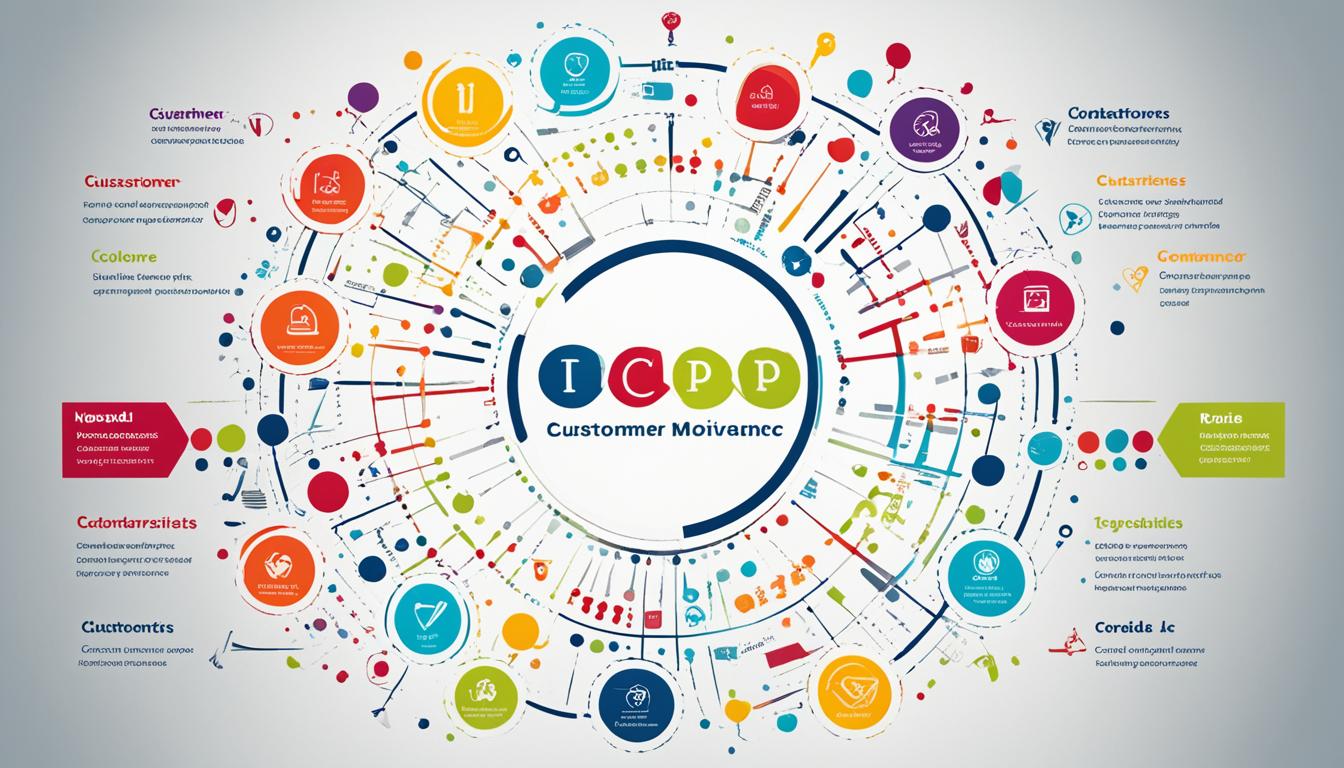Viral marketing is a sales technique that involves spreading information about a product or service through word of mouth or sharing via the Internet or email. It seeks to inspire individuals to share a marketing message with others, creating exponential growth in the number of recipients. The goal of viral marketing is to generate awareness and reach a larger customer base. Viral marketing has become more prevalent with the rise of the Internet and social media platforms, such as YouTube, Twitter, Instagram, and Facebook.
Companies can trigger virality using various tools, such as videos, games, images, email, and free products. However, the exact factors that cause something to go viral remain a mystery. Viral marketing can be a cost-effective way for companies to gain popularity and increase their customer base.
Key Takeaways:
- Viral marketing involves spreading marketing messages through word of mouth or sharing via the Internet or email.
- It aims to create exponential growth in the number of recipients and increase brand awareness.
- Social media platforms have played a significant role in the rise of viral marketing.
- Videos, games, images, email, and free products can be used as tools for triggering virality.
- Viral marketing offers a cost-effective way for companies to gain popularity and reach a larger customer base.
Understanding Viral Marketing
In the case of viral marketing, “viral” refers to something that spreads quickly and widely across its audience. Viral marketing is a deliberate strategy that aims to organically distribute a marketing message. Social media platforms provide an ideal environment for viral marketing as they allow for rapid sharing of content. Viral marketing campaigns can use various techniques, including videos, games, images, email, and free products, to appeal to the emotions of users and make it easier for them to consume and share. Influencers, who have a large network of followers, can also play a role in amplifying the reach of viral marketing. The viral nature of these campaigns, combined with the help of social networks, allows for quicker and more cost-effective marketing compared to traditional campaigns. However, measuring the success of viral marketing campaigns can be challenging.
Techniques Used in Viral Marketing:
- Videos: Engaging and shareable videos that evoke strong emotions.
- Games: Interactive games that encourage user participation and sharing.
- Images: Memorable images that users find relatable and share with others.
- Email: Compelling email campaigns that incentivize recipients to share.
- Free Products: Offering valuable free products to encourage word-of-mouth marketing.
Influencers and social media platforms greatly contribute to the success of viral marketing campaigns. Influencers with large networks can amplify the reach of viral content by sharing it with their followers. Meanwhile, social media platforms play a crucial role by allowing users to rapidly share content, resulting in a wider audience reach. The viral nature of these campaigns coupled with social media networks makes viral marketing a more efficient and cost-effective strategy compared to traditional marketing methods. However, accurately measuring the success of viral marketing campaigns can be challenging, as it relies heavily on user engagement and organic sharing.
Examples of Viral Marketing
Viral marketing has proven to be a powerful strategy for businesses to generate widespread brand awareness and engagement. By creating content that resonates with the target audience, companies have successfully executed viral marketing campaigns. Here are some notable examples:
-
Hotmail: Hotmail, the popular email service, implemented a successful viral marketing campaign in its early stages. It included an embedded advertisement and direct link in users’ outgoing messages, promoting the service to new users. This strategic approach led to rapid user growth and widespread adoption of Hotmail.
-
ALS Ice Bucket Challenge: The ALS Ice Bucket Challenge gained global attention and went viral on social media. Participants were challenged to pour a bucket of ice water over their heads and donate to the ALS Association. The campaign raised awareness of ALS and resulted in a significant increase in donations for ALS research.
-
Dollar Shave Club: Dollar Shave Club utilized humor and a memorable video advertisement to go viral. The company’s witty and entertaining video showcasing their subscription razor service garnered millions of views and generated widespread interest in their brand.
-
Old Spice – “The Man Your Man Could Smell Like”: Old Spice created a series of humorous and memorable commercials featuring the character “The Man Your Man Could Smell Like.” The commercials became viral sensations, engaging viewers and increasing brand recognition.
These examples highlight different approaches to viral marketing, including humor, addressing social issues, shock value, and utilizing influencers. The key to success in viral marketing is creating shareable content that resonates with the audience and motivates them to spread the message further.
Successful Viral Marketing Examples
| Brand | Campaign | Approach | Results |
|---|---|---|---|
| Hotmail | Embedded Advertisement in Outgoing Messages | Direct Link Promotion | Rapid User Growth |
| ALS Association | Ice Bucket Challenge | Social Media Challenge | Significant Increase in Donations |
| Dollar Shave Club | Memorable Video Advertisement | Humor | Millions of Views and Increased Brand Interest |
| Old Spice | “The Man Your Man Could Smell Like” Commercials | Humor | Viral Sensation and Increased Brand Recognition |
These viral marketing campaigns showcase the power of creating compelling and shareable content that resonates with the target audience. By leveraging various strategies and tactics, businesses can increase brand awareness, reach more customers, and achieve their marketing objectives.
Advantages and Disadvantages of Viral Marketing
Viral marketing, when executed successfully, can offer numerous advantages to businesses. One of the primary benefits is the ability to reach a much wider audience compared to traditional marketing campaigns. Viral content has the potential to spread rapidly across various platforms, allowing companies to tap into new markets and demographics. By leveraging the power of social media and online sharing, viral campaigns can significantly increase brand awareness, leading to a broader reach and heightened visibility.
Furthermore, successful viral marketing can contribute to audience growth as more people become exposed to the brand, its products, or services. This increased audience can translate into new customers and potential sales opportunities. Additionally, when a brand goes viral, it can be seen as an industry trendsetter, gaining attention and recognition from both consumers and media outlets. This attention can further boost brand credibility and establish the company as an authority within its niche.
However, it is important to consider the potential disadvantages of viral marketing. Not all viral campaigns receive positive feedback, and negative buzz can harm a brand’s reputation. As viral content spreads quickly, it can be challenging to control the narrative once it’s out in the public domain. Negative sentiments or misinterpretations can easily gain traction, leading to reputational damage if not managed effectively.
Measuring the success of viral marketing campaigns can also be a complex task. While reaching a large audience is desirable, it doesn’t guarantee increased customer engagement or sales conversions. Evaluating the impact of a viral campaign requires analyzing multiple metrics, such as engagement rates, conversions, and brand sentiment, to determine its effectiveness.
Advantages of Viral Marketing:
- Wider audience reach compared to traditional marketing
- Increased brand awareness and visibility
- Potential for audience growth and new customer acquisition
- Positioning as an industry trendsetter
Disadvantages of Viral Marketing:
- Potential for negative feedback and reputational damage
- Limited control over the spread and interpretation of content
- Challenges in measuring campaign success
| Advantages of Viral Marketing | Disadvantages of Viral Marketing |
|---|---|
| Wider audience reach compared to traditional marketing | Potential for negative feedback and reputational damage |
| Increased brand awareness and visibility | Limited control over the spread and interpretation of content |
| Potential for audience growth and new customer acquisition | Challenges in measuring campaign success |
| Positioning as an industry trendsetter |
Overall, viral marketing can be a powerful tool for businesses, but it requires careful planning, monitoring, and strategic execution to maximize its potential benefits while mitigating the risks. By understanding the advantages and disadvantages associated with viral marketing, companies can make informed decisions and develop effective strategies to harness the power of virality.
How Do You Make Money If Your Video Goes Viral?
Monetizing a viral video presents several opportunities for content creators to generate revenue beyond traditional methods. There are various ways to capitalize on the exposure and reach of a viral video and turn it into a profitable venture.
One option is to require viewers to pay to access the video, providing exclusive content or behind-the-scenes footage for a fee. This model can be successful if the video’s content is highly compelling and sought after by a specific audience.
Alternatively, companies can approach content creators to advertise to the viral video’s audience in exchange for a fee. This form of sponsorship allows brands to leverage the video’s popularity and target a large and engaged viewership.
In addition to direct payment, creators may also receive compensation for mentioning products or services in their viral videos. This can be in the form of endorsements or partnerships, where brands collaborate with content creators to integrate their products seamlessly into the video.
Furthermore, licensing the viral video’s content to third parties can be a lucrative revenue stream. Content creators can negotiate licensing agreements with media outlets or platforms that are interested in featuring or distributing the video, granting them access to a broader audience and generating royalties.
Ultimately, the key to making money from a viral video lies in leveraging the exposure and reach that the video has gained. By attracting partnerships, sponsorships, and endorsement opportunities, content creators can transform their viral success into tangible financial rewards.
Monetization Methods for Viral Videos
| Monetization Method | Description |
|---|---|
| Pay-per-view access | Viewers are required to pay to watch the video. |
| Sponsorship and advertising | Companies pay to advertise to the video’s audience. |
| Product or service endorsements | Creators receive payment for mentioning products or services in the video. |
| Licensing | Content is licensed to third parties for distribution, generating royalties. |
When it comes to monetizing viral videos, content creators have several avenues to explore. By strategically capitalizing on the video’s popularity and leveraging partnerships, endorsements, or licensing opportunities, creators can convert their viral success into financial gains.
Why Is Transparency So Important in Viral Marketing?
Transparency plays a crucial role in the success of viral marketing campaigns. As consumers become increasingly skeptical of traditional marketing tactics, they demand honesty and openness from brands. By being transparent in their marketing efforts, companies can build trust with their audience and cultivate long-lasting customer loyalty.
Studies show that approximately 94% of consumers are more likely to remain loyal to brands that demonstrate transparency in their marketing. When consumers trust a brand, they are more inclined to engage with their content, share it with others, and make purchases. Moreover, transparency creates a positive perception of the brand, which can further enhance its reputation and attract new customers.
Being transparent in viral marketing campaigns involves providing clear and truthful information about the brand, its products or services, and its motives. Authenticity and honesty resonate with consumers, making them more receptive to the marketing message. This transparency can be demonstrated through open communication, disclosing information about any potential conflicts of interest, and acknowledging mistakes when they occur.
Transparency in viral marketing also helps to prevent potential backlash or negative publicity. When brands are upfront about their intentions and operations, they are less likely to face accusations of deception or unethical practices. By proactively addressing questions and concerns, brands can effectively manage their reputation and maintain a positive image.
Overall, transparency is essential in viral marketing because it builds trust, fosters customer loyalty, and safeguards the brand’s reputation. By prioritizing transparency in their marketing strategies, brands can create genuine connections with their audience and increase the chances of their viral campaigns resonating with consumers.
| Benefits of Transparency in Viral Marketing | Challenges of Lack of Transparency in Viral Marketing |
|---|---|
|
|
What Does “Seeding” Mean in Relation to a Viral Marketing Campaign?
In the realm of viral marketing, “seeding” refers to a strategic technique employed by companies to intentionally distribute viral information or content to a select group of individuals who are likely to share it. The goal of this technique is to create initial momentum and encourage organic sharing of the campaign, propelling it towards widespread exposure and engagement.
Social media influencers are often key players in the seeding process, chosen for their extensive network and ability to effectively spread the word about a product or campaign. In addition to amplifying the reach of the marketing message, seeding also allows companies to gather valuable feedback and insights from these influencers and their followers.
Seeding serves as a critical step in launching a successful viral marketing campaign. By strategically placing the content into the hands of influential individuals who are likely to share it with their networks, seeding helps kickstart the spread of the message and generates initial engagement.
To illustrate the importance of seeding in viral marketing campaigns, let’s take a look at a hypothetical example:
| Traditional Marketing | Viral Marketing |
|---|---|
| Reach limited audience | Reach wider audience through organic sharing |
| Higher cost per customer acquisition | Lower cost per customer acquisition |
| Relies on traditional advertising methods | Capitalizes on the power of social media and word of mouth |
| Slow and gradual growth | Exponential growth potential |
As shown in the table above, viral marketing techniques, including seeding, offer distinct advantages over traditional marketing methods. By strategically targeting influencers and leveraging their networks, companies can tap into the viral nature of social media platforms and generate rapid and cost-effective growth.
In conclusion, seeding plays a crucial role in launching and promoting a viral marketing campaign. By identifying and strategically distributing content to key individuals, companies can effectively harness the power of organic sharing and amplify their marketing message, ultimately reaching a larger audience and achieving their marketing goals.
What Are the Steps to Start a Viral Marketing Campaign?
Starting a viral marketing campaign involves several crucial steps. By following these guidelines, you can increase your chances of creating a successful viral campaign that captures the attention of your target audience and generates widespread sharing.
- Define the purpose of your campaign: Clarify the objective of your viral marketing campaign. Determine whether you want to improve brand image, increase brand awareness, or promote a specific product or service. Having a clear purpose helps you align your strategies and create content that resonates with your audience.
- Research and understand your target audience: Gain in-depth knowledge about your target audience, including their preferences, behaviors, and demographics. This information will guide you in crafting content that is relevant, relatable, and appealing to your audience.
- Create easily shareable and relatable content: Develop content that is highly shareable and easy for your audience to engage with. Whether it’s a video, an image, or an article, make sure it grabs attention and evokes emotions. Utilize storytelling techniques, humor, or shock value to enhance its viral potential.
- Utilize trends and hashtags: Stay updated with current trends and popular hashtags that align with your brand or campaign. Incorporate these elements into your content to increase its visibility and reach. By leveraging trends, you can tap into existing conversations and capture the attention of your target audience.
- Analyze and measure campaign success: Use relevant metrics such as engagement, reach, and conversion rates to measure the effectiveness of your viral marketing campaign. Analyze the data to understand what worked well and what could be improved for future campaigns.
By following these steps and continuously refining your approach, you can develop a strong viral marketing strategy that enhances your brand visibility, engages your audience, and drives favorable results.
What Are Good Tools for Viral Marketing Campaigns?
In viral marketing campaigns, utilizing the right tools can greatly enhance the chances of success. These tools enable businesses to create compelling content, reach a wider audience, and measure the effectiveness of their campaigns. Here are some effective tools to consider:
1. Community Creation and Sponsorship
Creating and sponsoring communities can be an excellent way to promote products or services through user-generated content. By building a community around a brand, businesses can foster engagement, loyalty, and advocacy among their customers. Sponsorship of communities allows companies to tap into existing networks, amplifying their reach and increasing the potential for viral sharing.
2. Sweepstakes, Contests, and Rewards
Sweepstakes, contests, and rewards are powerful tools for generating buzz and attracting a larger audience. These activities incentivize participation and encourage users to share the campaign with their networks, increasing the chances of virality. Offering enticing rewards and prizes can make the campaign more appealing and create a sense of urgency, motivating users to take action.
3. Sponsorships of Messages and Chat Blasts
Sponsorships of messages and chat blasts involve partnering with influential individuals or brands to share the marketing message. This technique leverages the credibility and reach of these influencers to extend the campaign’s reach and enhance its impact. By collaborating with relevant influencers, companies can tap into their established fan base and leverage their followers’ trust to drive viral sharing.
4. Social Media Analytics Tools
Utilizing social media analytics tools provides valuable insights into audience preferences, demographics, and engagement patterns. These tools allow businesses to monitor the progress and success of their viral marketing campaigns, providing data-driven insights for optimization. By tracking metrics such as engagement rates, reach, and conversion rates, companies can refine their strategies and maximize the effectiveness of their viral marketing efforts.
When implementing a viral marketing campaign, it is essential to choose the right tools that align with the objectives and target audience. Each tool offers unique capabilities to enhance the reach, engagement, and success of the campaign. By leveraging these tools strategically, businesses can increase their chances of creating viral content and achieving their marketing goals.
The Bottom Line
Viral marketing is a powerful and cost-effective technique that businesses can utilize to increase brand awareness and promote their products or services. By encouraging sharing and generating buzz, viral marketing campaigns have the potential to reach a wider audience, driving more traffic and potentially increasing revenues.
However, it is essential to approach viral marketing with a strategic and customer-centric mindset. Creating valuable, relatable, and shareable content is crucial to the success of a viral campaign. Understanding the target audience and their preferences can help businesses tailor their marketing messages effectively. Additionally, leveraging social media platforms and their wide-reaching capabilities is essential in spreading the campaign virally.
Viral marketing should be seen as a supplement to a larger marketing strategy. While it can deliver promising results on its own, the key to its success lies in integrating it seamlessly with other marketing efforts. By setting specific goals and objectives, businesses can measure the success of their viral marketing campaigns and optimize their future strategies based on the achieved results.
Tips for Successful Viral Marketing:
- Create valuable and relatable content that resonates with your target audience.
- Utilize social media platforms to maximize the reach and sharing potential of your campaign.
- Focus on delivering a customer-centric experience that encourages engagement and sharing.
- Integrate viral marketing seamlessly into your overall marketing strategy.
- Set specific goals and objectives to measure the success of your viral marketing efforts.
By following these tips and leveraging the power of viral marketing, businesses can expand their brand’s reach, attract new customers, and ultimately drive growth and success in today’s digital landscape.
| Advantages | Disadvantages |
|---|---|
| Increased brand awareness | Potential for negative reception |
| Wider audience reach | Loss of control over shared content |
| Potential for increased revenues | Challenges in measuring success |
| Positioning as an industry trendsetter | Not all viral content leads to customer engagement or sales |
Conclusion
Viral marketing is a powerful tool that allows businesses to amplify their message and connect with a broader audience. By leveraging the natural sharing and spreading of content, businesses can effectively increase brand awareness and potentially drive higher sales. While there is no guaranteed formula for creating viral content, understanding the target audience, developing valuable and relatable content, and utilizing social media platforms appropriately can significantly increase the chances of a campaign going viral.
However, it is important for businesses to approach viral marketing with caution. Viral campaigns can sometimes have unexpected outcomes, both positive and negative. It’s crucial to be prepared for different reactions and maintain a proactive approach in managing the campaign. By integrating viral marketing into a well-rounded marketing strategy, businesses can maximize their reach and impact in the digital age.
Overall, viral marketing plays a key role in today’s digital landscape. Its ability to generate buzz, increase brand exposure, and engage a wider audience makes it an essential tool for businesses looking to thrive in a competitive market. By understanding the importance of viral marketing and implementing effective strategies, businesses can unlock the full potential of this unique marketing approach.






